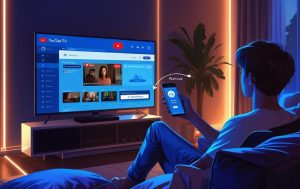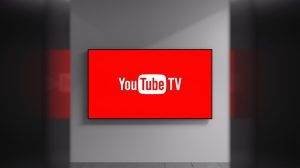
What is YouTube TV? A Complete Guide for Streamers
What is YouTube TV? A Complete Guide for Streamers Table of Contents Streaming television has completely changed the way we watch shows, sports, and news.
If you’re wondering why YouTube TV audio is out of sync, you’re not alone. This is a widespread issue affecting millions of users across Smart TVs, streaming sticks, browsers, and mobile devices. Whether it’s a noticeable sound delay, a full lip sync issue, or a constant mismatch between video and audio, it can be incredibly frustrating—especially when you’re trying to enjoy your favorite show or a live game.
The good news? It’s fixable. This guide explains exactly what causes the YouTube TV audio out of sync problem and provides detailed, actionable solutions that work across every major device and platform. You’ll learn the root causes, fast troubleshooting steps, deep settings adjustments, and how to prevent the issue from recurring in the future.
The problem of YouTube TV audio out of sync can stem from multiple sources, and understanding them is essential to finding the right fix. These audio delays don’t usually start randomly—they result from technical limitations, signal processing delays, or outdated components in your streaming setup.
Here are the most common causes:
All these issues, either separately or combined, can result in a sound and video mismatch.
Before diving deep into settings, there are a few quick checks that often solve YouTube TV audio out of sync without much effort. These easy steps can help isolate the problem or resolve minor sync issues immediately.
These steps can resolve or narrow down the root cause of the YouTube TV audio out of sync error quickly.
Now that you’ve checked the basics, here are device-specific solutions to fix YouTube TV audio out of sync once and for all. These are tested fixes that address the real causes of sound lag and mismatch.
These universal steps solve many cases of sound delay on YouTube TV, especially when caused by temporary memory or software glitches.
If you’re watching on a Smart TV and experiencing YouTube TV audio out of sync, try the following:
These adjustments often resolve TV audio not matching video on native TV apps.
Streaming sticks are also known for causing YouTube TV audio out of sync errors due to output format or bandwidth limitations.
Try the following:
Streaming devices often need fine-tuning to deliver synced playback, especially when using third-party apps.
If you’re using a browser and experiencing a lip sync issue on YouTube, follow these steps:
Browsers use CPU and RAM heavily, which can desynchronize video and sound when under pressure.
For mobile users facing YouTube TV audio out of sync, the problem often lies in app performance or background processes.
These steps usually fix sound and video mismatch caused by app-level bugs or memory overload.
Some advanced adjustments can permanently resolve YouTube TV audio out of sync problems. These settings are often hidden within your TV or streaming device but can be very effective.
Using compatible and low-latency settings helps reduce future sound delay on YouTube TV streams.
Sometimes, no setting or fix can solve the persistent issue of YouTube TV audio out of sync. If you’re constantly dealing with sync issues, your hardware may be outdated or underpowered.
Look for devices or TVs that offer:
If you’re serious about seamless viewing, upgrading may be the long-term fix for eliminating lip sync issue on YouTube altogether.
Prevention is just as important as fixing current problems. To keep your YouTube TV experience smooth and fully synced:
These habits will help you avoid another YouTube TV audio out of sync headache.
Experiencing YouTube TV audio out of sync can make watching content feel unbearable. But the right combination of quick fixes, deep settings adjustments, and hardware optimization can solve it. Whether it’s a sound delay on YouTube TV, a full lip sync issue, or a frustrating TV audio not matching video problem, this guide gives you all the tools to fix it for good.
Don’t let a small delay ruin your entire streaming experience. Take action, follow the steps, and get back to enjoying perfect audio-video harmony.
Need help activating or troubleshooting your device? Visit YouTVStart.com for full setup instructions and 24/7 live support.
Enjoy a 7–14 day free trial by visiting tv.youtube tv/start and start watching in sync.
It can be caused by slow internet, outdated apps, Bluetooth delays, or unsupported resolution/audio formats on your device.
Restart the app, check your internet speed, adjust audio settings, and disable enhancements like Dolby Digital or surround sound.
It depends. In most cases, the issue is caused by device performance, outdated firmware, or external audio equipment.
Yes, many sync issues are temporary and can be resolved by restarting the app or device.
Audio output format (PCM vs Dolby), resolution, and hardware acceleration settings can all impact sync.
Yes, by using wired connections, compatible audio formats, and keeping your system updated, you can prevent recurring issues.
Live broadcasts are more bandwidth-heavy and processed in real-time, making them more prone to sync errors.
Yes. If the issue only appears on one device, switching helps identify if the problem is hardware-specific.


What is YouTube TV? A Complete Guide for Streamers Table of Contents Streaming television has completely changed the way we watch shows, sports, and news.

How to Speak to a Person at YouTube TV Table of Contents If you are a YouTube TV subscriber, one of the most common questions

How Much is YouTube TV a Month? Table of Contents If you’re thinking about cutting the cord and moving away from expensive cable, one of